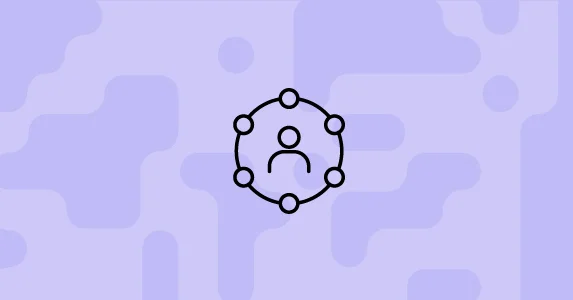Omnichannel marketing isn’t just another passing buzzword. Most trends in our industry burn bright and fizzle fast—think “growth hacking,” “viral loops,” or “snackable content.” They spike, fade, and eventually become punchlines. But every so often, a concept sticks because it reflects a real, necessary shift in how marketing works. An omnichannel strategy is one of those hacks to deliver an efficient customer experience.
Here’s why:
- Customers don’t move in straight lines anymore. They bounce between search, social, email, apps, and stores—often in a single buying journey.
- They expect brands to remember who they are across those channels. (Your customers don’t think in terms of “channels.” They think in terms of experience.)
- And when you fail? They leave. Usually, for a competitor who does get it right.
So the question isn’t whether you should have an omnichannel strategy. It’s whether yours is strong enough to compete in 2025, where expectations are higher, AI is raising the bar, and seamless customer journeys are the new battleground for loyalty.
In this article, I’ll break down what omnichannel strategy actually means, why it matters now more than ever, and how you can design campaigns, pick the right tools, and measure success without drowning in complexity.
TL;DR: Omnichannel Strategy 2025
- Omnichannel Strategy: A unified approach to customer experience across online and offline touchpoints.
- Omnichannel vs Multichannel: Multichannel = presence everywhere; Omnichannel = connected, consistent experiences everywhere.
- Why it matters in 2025: Customers demand personalization, speed, and consistency—brands that fail risk losing loyalty.
- Key benefits: Higher retention, richer data insights, efficient campaigns, and stronger ROI.
- Best practices: Map journeys, unify data, automate campaigns, stay channel-agnostic, and measure everything.
- Campaign design: Great omnichannel campaigns (Starbucks, Nike, Sephora) are consistent, personalized, and integrated.
- Top tools: CDPs (Segment), CRMs (Salesforce), automation (Netcore, Klaviyo), and analytics (GA4) power seamless journeys.
- AI & personalization: Predictive recommendations, dynamic content, and chatbots turn good strategies into great ones.
- Examples: Disney, Amazon, and Walmart show how connected experiences win loyalty.
- Measurement & trends: Track retention, CLV, NPS, and conversions while preparing for AI, AR/VR, and privacy-driven personalization.
What is an Omnichannel Strategy?
An omnichannel strategy is all about providing a consistent customer experience across every touchpoint—online and offline—so the customer feels like they’re dealing with one brand, not individual channels.
Consider it this way: if a customer puts an item in their basket on your app, they should find it when they log in to your website, and even be reminded of it via an email or push message subsequently. That’s omnichannel.
It’s not about being everywhere—it’s about being connected and consistent everywhere.
Omnichannel vs Multichannel: Key Differences Explained
Multichannel means you’re present on multiple platforms, but they don’t necessarily “talk” to each other. Omnichannel ensures every channel is interconnected for a seamless experience.
Here’s the breakdown of differences in omnichannel vs multichannel:
- Multichannel → More like “channel silos.” Your website, social media, and store might exist independently without sharing data.
- Omnichannel → Unified experience. Customers can jump from Instagram to your site to your physical store without friction.
Example: In multichannel, if you email a promo code, your in-store staff may not be aware. Omnichannel makes the same data and promotions available to all, ensuring a consistent customer experience.
Why Omnichannel is Important for Customer Experience in 2025
Customers expect personalization, speed, and consistency across all channels. Omnichannel is no longer optional—it’s survival.
A few reasons why omnichannel is crucial in 2025:
- Customer loyalty is at stake. Customers abandon brands that feel disconnected.
- Mobile-first shopping is the norm. People browse on mobile, purchase on desktop, and reorder in-store.
- AI-powered personalization is rising. Customers expect “Netflix-style” recommendations everywhere.
If you’re not providing a seamless experience, your competitors definitely are—and customers won’t hesitate to switch.
Benefits of Implementing an Omnichannel Strategy
Omnichannel strategies increase customer retention, improve engagement, and boost ROI.
Here are the major benefits of an omnichannel strategy:
- Higher retention rates: Loyal customers spend more and buy more often.
- Improved customer data insights: Every touchpoint adds to a richer customer profile.
- Personalized experiences at scale: With integrated data, you can serve tailored offers across channels.
- More efficient campaigns: No wasted spend on duplicated or irrelevant ads.
Simply put, omnichannel isn’t just about making customers happy—it’s about making businesses smarter.
Omnichannel Marketing Strategies & Best Practices for Seamless Journeys
To build effective omnichannel marketing strategies, focus on customer-first experiences, unified data, and personalization.
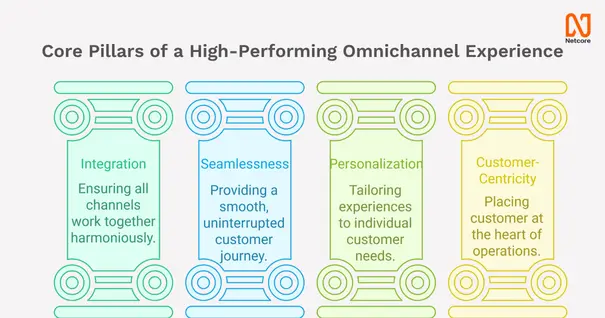
Here are the omnichannel marketing strategies and best practices I swear by:
- Start with customer journey mapping – Identify where customers engage with your brand and what roadblocks they hit.
- Unify data sources – Break down silos between sales, marketing, and customer support.
- Leverage automation – Use tools that trigger the right message at the right time.
- Be channel-agnostic – Focus on customer needs, not the platform.
- Measure everything – Track engagement across touchpoints, not just last-click attribution.
These strategies turn disconnected interactions into seamless journeys.
Designing Omnichannel Marketing Campaigns That Drive Engagement
The best omnichannel campaigns are integrated, personalized, and customer-focused.
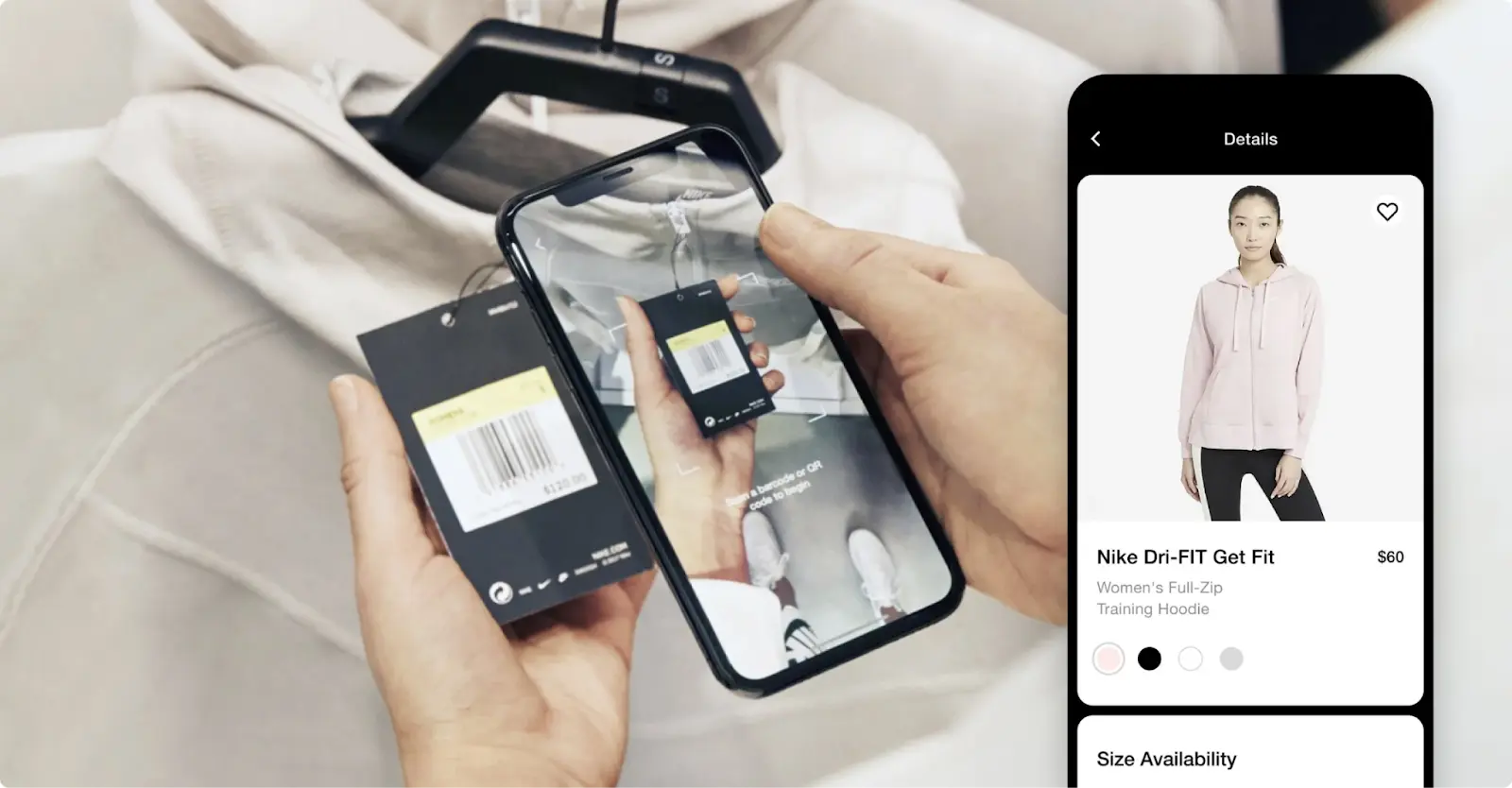
Some real-world omnichannel marketing campaign examples:
- Starbucks Rewards App: Order on the app, pick up in-store, earn points everywhere. This is a good example of building omnichannel marketing experience in retail.
- Nike’s App Ecosystem: Personalized training plans + exclusive product drops + seamless store sync.
- Sephora’s Beauty Insider: Recommendations, wishlists, and loyalty rewards that sync across app, website, and stores.
The key takeaway? Consistency. Customers should recognize your brand instantly no matter where they interact.
Omni-Channel Marketing Tools to Power Customer Journeys
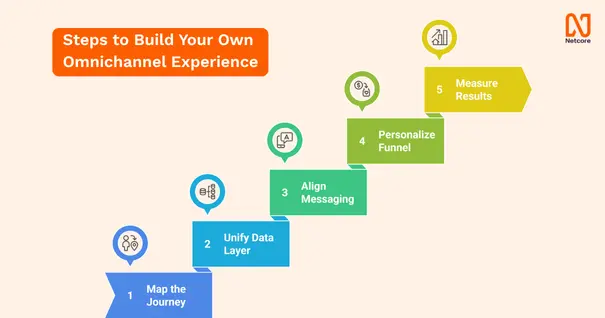
The right tools make omnichannel strategies possible by integrating data and automating campaigns.
Top omni-channel marketing tools to consider:
- Customer Data Platforms (CDPs): Segment, mParticle, Treasure Data.
- CRM Systems: HubSpot, Salesforce, Zoho CRM.
- Marketing Automation: Netcore, Klaviyo, ActiveCampaign, Mailchimp.
- Analytics Tools: Google Analytics 4, Mixpanel, Amplitude.
- Customer Experience Tools: Zendesk, Intercom.
Without these tools, omnichannel becomes a manual nightmare. With them, it becomes manageable—and scalable.
Personalization and AI in Omnichannel Strategy
AI and personalization transform omnichannel strategies from “generic consistency” to “hyper-relevant experiences.”
Here’s how AI powers personalization and omnichannel strategy:
- Predictive recommendations: Think “Amazon-style” product suggestions.
- Dynamic content: Personalized emails, landing pages, and offers.
- Chatbots & virtual assistants: 24/7 personalized customer support.
- Smart segmentation: AI learns customer behaviors and adapts campaigns.
Traditionally, personalization meant adding a first name to an email or segmenting customers by demographics. In 2025, that’s table stakes. Today, AI-driven personalization delivers context-aware, predictive, and dynamic experiences that adapt in real time.
This is where Netcore’s Agentic AI framework shines. It’s built with multiple specialized AI agents that work together to automate complex marketing workflows while still keeping campaigns precise, efficient, and hyper-personalized.
How Netcore’s Agentic AI Agents Power Personalization
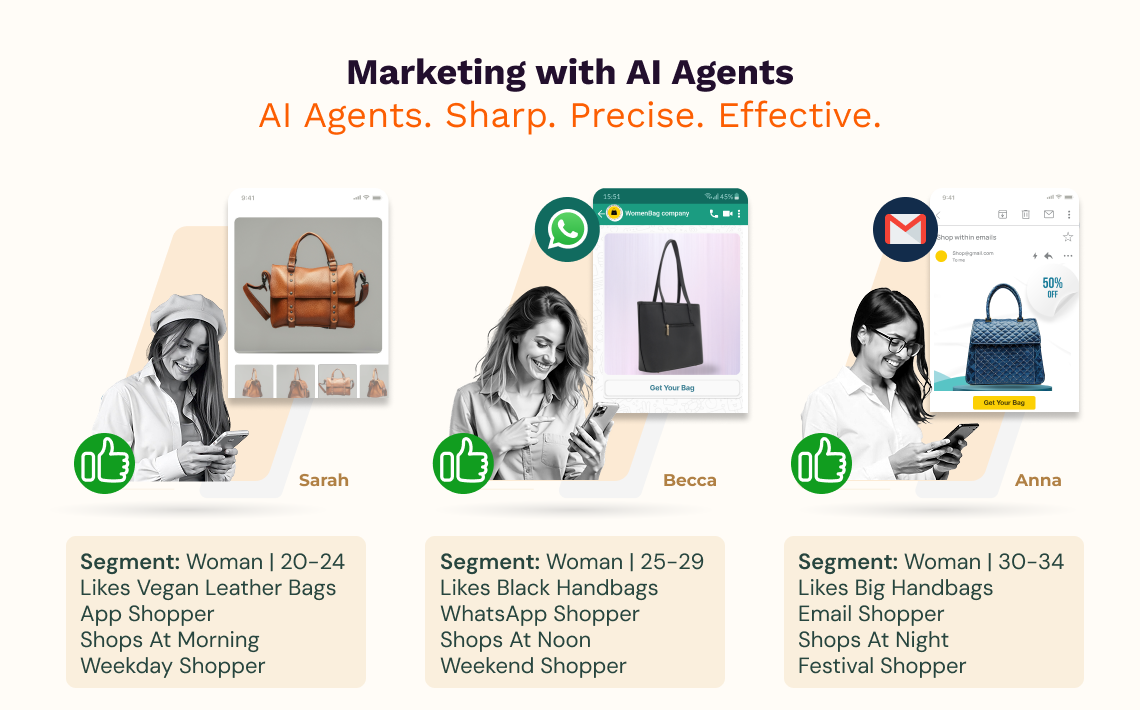
- Content Agent
- Role: Generates multi-channel content (email, web messages, app notifications, WhatsApp promos).
- Functionality: Creates on-brand creatives and personalized content from a single prompt, tailored to each channel’s best practices.
- Use Case: Enables marketers to scale campaigns effortlessly while maintaining a consistent brand voice.
- Segment (PX) | User Segmentation Agent
- Role: Performs deep audience segmentation using advanced data analytics.
- Functionality: Builds micro-segments from 500+ data points like affinity scores, behavioral patterns, and purchase propensity.
- Use Case: Identifies high-value customers for targeted campaigns that improve ROI and deliver more relevant experiences.
- Scheduler Agent
- Role: Automates campaign scheduling across multiple channels.
- Functionality: Identifies the best times to communicate per segment or individual user, maximizing open and engagement rates.
- Journey (CE) | Journey Orchestration Agent
- Role: Designs and manages end-to-end customer journeys across touchpoints (web, email, apps, WhatsApp, etc.).
- Functionality:
- Orchestrates workflows using insights from segmentation + content creation.
- Dynamically optimizes journeys in real time based on signals like churn risk or purchase intent.
- Triggers cross-sell and upsell recommendations at the right lifecycle stage.
Results Marketers Can Expect
By leveraging these AI agents, brands can:
- Achieve up to 45% increase in website conversions
- Unlock up to 20% revenue uplift
- Significantly reduce cart abandonment
- Boost customer retention with continuous, AI-powered optimization
In other words, AI is no longer a “nice-to-have.” It’s the engine that makes omnichannel personalization truly work at scale.
Examples of Successful Omnichannel Strategies in Action
Big brands are already showing us how omnichannel strategies win customers.
A few inspiring examples:
- Disney: From website booking to in-park app navigation, everything is connected.
- Amazon: Seamless integration between Alexa, mobile app, website, and physical stores.
- Walmart: Buy online, pick up in-store, return anywhere—frictionless retail.
If these giants are investing heavily in omnichannel, it’s because it pays off big time.
Measuring Success and Future Trends in Omnichannel Strategy
Success is measured by customer experience metrics, not just sales. And the future is powered by AI, AR, and hyper-personalization.
How to measure omnichannel success:
- Customer retention rate
- Customer lifetime value (CLV)
- Net promoter score (NPS)
- Engagement across touchpoints
- Conversion rate lift from personalized campaigns
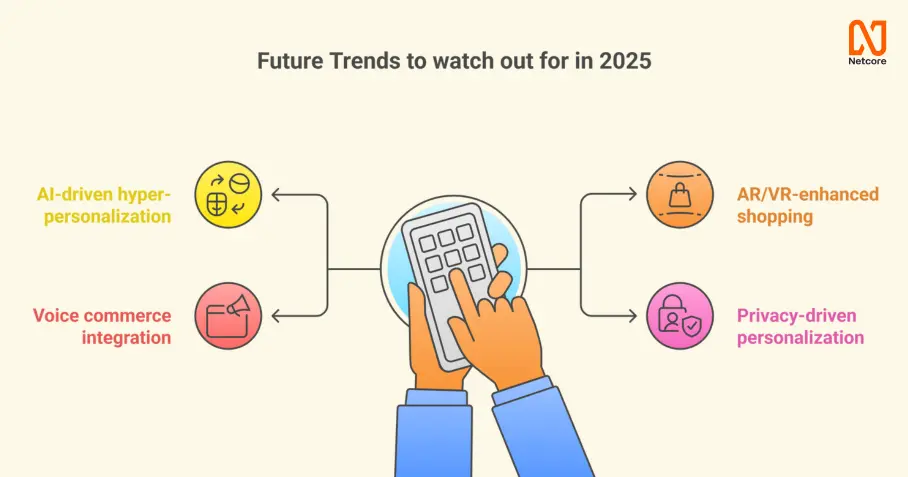
Future trends to watch in 2025:
- AI-driven hyper-personalization
- AR/VR-enhanced shopping experiences
- Voice commerce integration
- Stronger privacy-driven personalization
The brands that adapt fastest will win the loyalty game.
Final Take
Delivering seamless customer journeys in 2025 isn’t about being everywhere—it’s about being connected everywhere. Customers don’t think in “channels”; they think in experiences.
If you can create strategies, campaigns, and personalized interactions backed by the right tools and data, you’ll not only meet customer expectations—you’ll exceed them.
The real question is: Are you ready to deliver an omnichannel journey that feels effortless to your customers?
 2 YRS IN A ROW
2 YRS IN A ROW  Netcore Named a Leader in 2025 Gartner® Magic Quadrant™ for Search & Product Discovery
Netcore Named a Leader in 2025 Gartner® Magic Quadrant™ for Search & Product Discovery 








